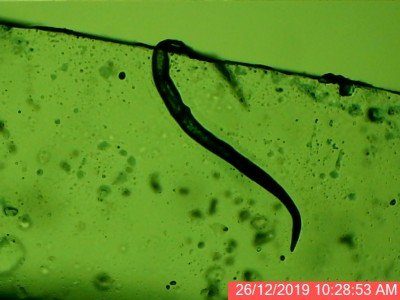
Imagine the world of small mammals—like rabbits, voles, and mice—as a bustling city. Within this city, there are residents going about their daily lives, blissfully unaware of the lurking dangers. Enter the wolf worm, a parasite that can turn these thriving creatures into host homes. These small mammals face unique challenges that make them more susceptible to these nasty worms, and understanding this vulnerability is key to appreciating the balance of nature.
What Are Wolf Worms, Anyway?
Wolf worms, scientifically known as *larva migrans*, are the immature stage of certain parasitic flies, notably the *Cuterebra* genus. These worms are notorious for infecting small mammals, including rodents and lagomorphs. Imagine them as uninvited guests, settling in and wreaking havoc in their hosts’ bodies.
When wolf worms invade, they typically enter the host through wounds or body openings. Once inside, they can migrate through tissues, causing serious health issues. While this sounds grim, it’s part of a natural cycle. The worms need a host to develop, and small mammals, due to their size and behaviors, inadvertently fill this role.
Why Are Small Mammals Easy Targets?
So, what makes small mammals like mice and rabbits such easy targets for wolf worms? It starts with their size. Being smaller means they have less body mass to combat the infestation. Additionally, small mammals often have more vulnerable skin, making it easier for wolf worms to enter their bodies.
Another factor is their habitat. Small mammals tend to live in environments rife with vegetation—think fields and forests—where the larvae of these worms can easily thrive. In these settings, they may encounter larval stages while grooming or foraging for food. It’s a bit like entering a buffet where everything looks tempting but harbors hidden dangers.
The Role of Behavior in Vulnerability
Behavior also plays a significant role in the vulnerability of small mammals to wolf worms. Many of these critters are naturally curious and tend to explore their surroundings. This behavior might seem innocent, but it often leads them to come into contact with parasite-infested areas.
For instance, when rabbits dig in the dirt or mice scurry through underbrush, they’re more likely to pick up these larvae compared to larger animals that might avoid these areas. It’s almost like a game of tag—where the smaller friends are “it,” running around and unknowingly drawing the attention of wolf worms.
The Impact of Habitat Loss
As humans continue to encroach on nature, habitat loss becomes a serious issue for small mammals. When their natural environments shrink, these creatures often find themselves in less hospitable areas where they become even more exposed to parasites and diseases, including wolf worms.
The fragmentation of habitats can lead to increased competition for resources. When food and shelter become scarce, stressed animals may take more risks, making them more likely to come into contact with wolf worm larvae. In this way, the loss of natural spaces creates a cascading effect on small mammals’ health and survival.
How Do Wolf Worm Infections Affect Small Mammals?
Infection from wolf worms can lead to serious health issues for small mammals. Symptoms vary, but they often include lethargy, difficulty breathing, or visible lesions on the skin. The worms can cause tissue damage as they migrate, leading to further complications.
Consider a small mammal with a wolf worm infection: it might be more vulnerable to predators because it’s too weak to flee. Also, the stress of the infection can decrease its chances of successfully reproducing. This creates a ripple effect on population dynamics in the ecosystem, showing just how interconnected these relationships are.
Can Small Mammals Fight Back?
While small mammals have some innate defenses, they’re limited when it comes to fighting off wolf worms. Their immune systems can mount responses to infections, but they simply aren’t equipped to deal with these particular parasites effectively. Some mammals may develop resistance over time, but this process takes generations.
Interestingly, some species have adapted behaviors to help reduce their risk. For example, you might see small mammals grooming more thoroughly after foraging, which can help remove larvae before they enter the body. However, these adaptive strategies can only go so far and cannot completely rid them of the threat.
What Can Be Done?
Understanding the vulnerability of small mammals to wolf worms is essential for conservation efforts. Protecting habitats, reducing pollution, and maintaining healthy ecosystems can help keep these creatures safe. If we can create environments that support their health, we’re not just helping small mammals—we’re supporting the entire web of life they are part of.
Educational programs can also be instrumental in raising awareness. By teaching communities about the importance of small mammals and the dangers of parasites like wolf worms, we can foster a sense of stewardship for these often-overlooked creatures.
The world of small mammals is a fascinating and complex web of life, fraught with challenges like wolf worms. By understanding why these creatures are so vulnerable to such parasites, we can appreciate the delicate balance of nature. It serves as a reminder that every creature, no matter how small, plays a crucial role in our ecosystems.
So, next time you think about wolves lurking in the shadows, remember those little mammals scurrying around, trying to survive in a world filled with both beauty and peril. We can each play a part in preserving this balance, ensuring that these small beings continue to thrive despite the lurking dangers.
